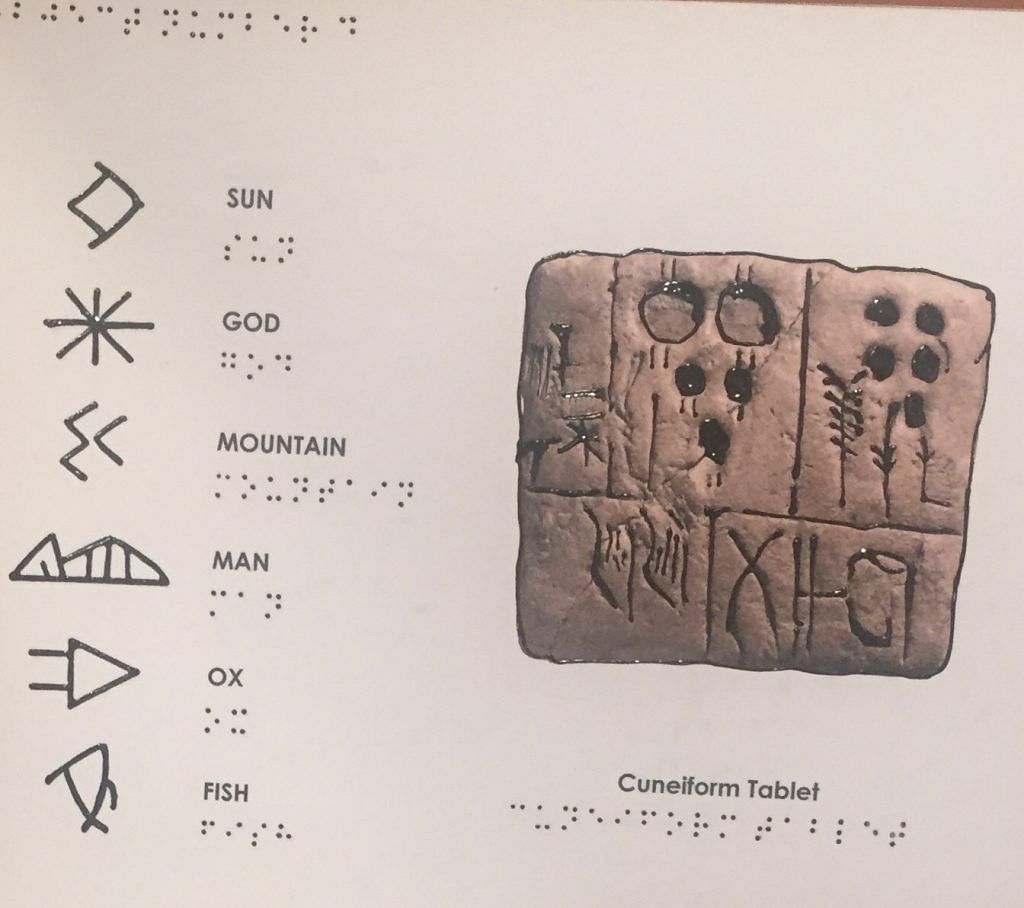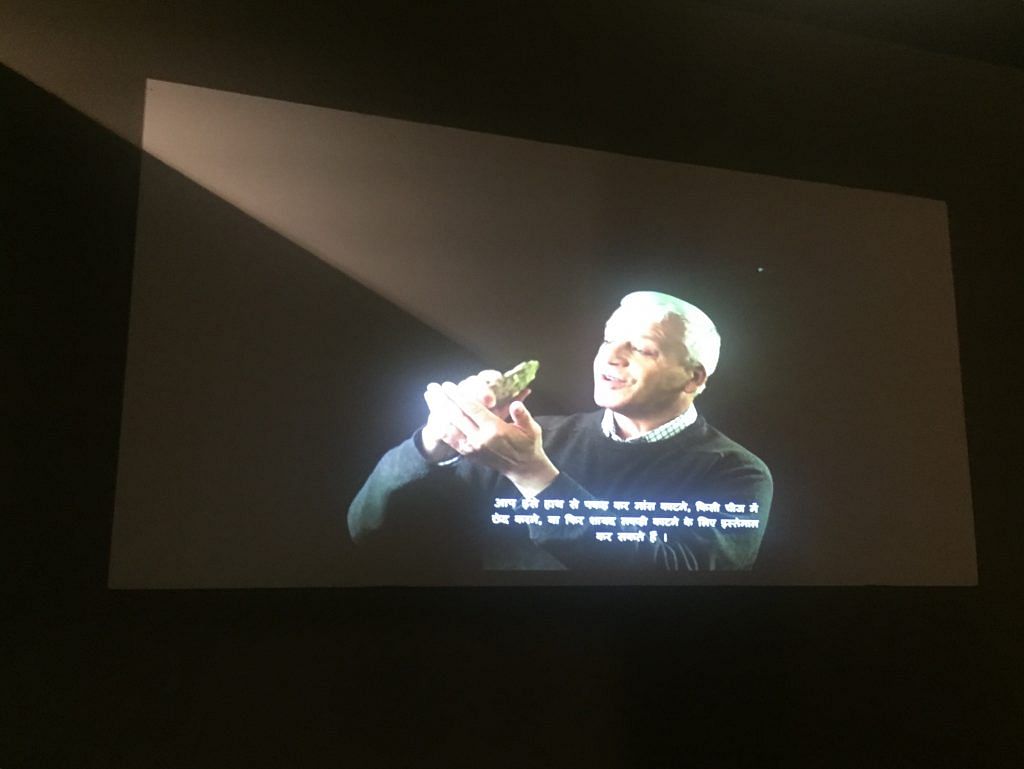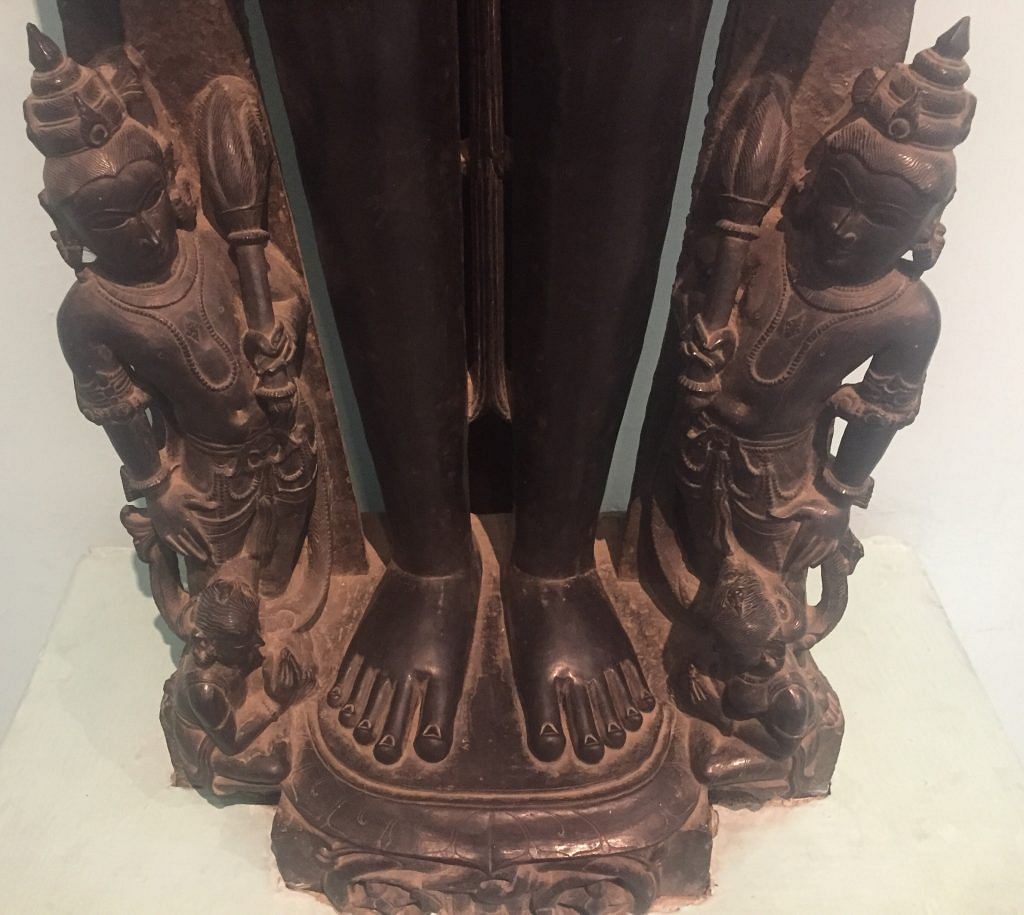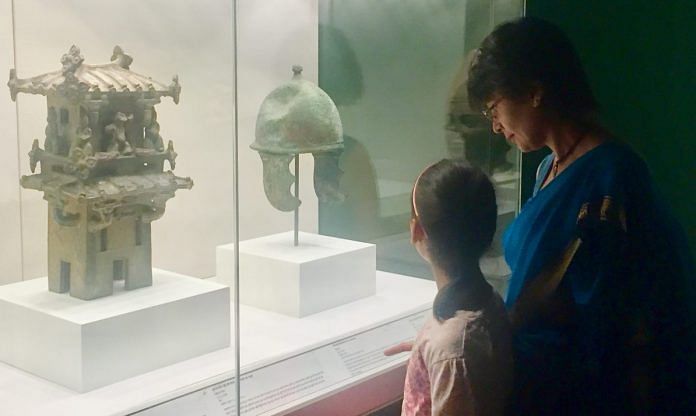Years of apathy and India’s absent museum culture have ensured that the museum fails to compete with its international counterparts.
New Delhi: The 69-year old National Museum in the heart of the national capital just concluded a rare two-month-long transcontinental exhibition, ‘India and the World: A History in Nine Stories’, which showcased some of the most spectacular objects from around the world.
However, apart from the magnificence of the exhibits – from the oldest hand-axe in the world to the iconic ‘Dancing Girl’ in Harappa – there was little else to be praised about the exhibition, which was curated in collaboration with the British Museum and the Mumbai-based Chhatrapati Shivaji Maharaj Vastu Sangrahalaya.
“Look around…there are no staff members, no guides to answer questions…only this inadequate audio tour,” said Kishan Rana, a former consul general in San Francisco who also served as a joint secretary on former Prime Minister Indira Gandhi’s staff. “Is this how museums hold world-class exhibitions?” he asked as he toured the exhibition with his grandson.
The tragedy of rare and splendid artefacts being showcased with inferior infrastructure is, however, the tragedy of the National Museum itself. Years of state apathy, bureaucratic sluggishness and the lack of a museum culture in India have ensured that the museum – home to over two lakh objects covering a time span of more than 5,000 years – fails to compete with its counterparts in the US, UK or even China.
“Obviously, the actual art work at the museum is world-class…But the building needs some renovation for it to actually stand out,” said Owen, an American national visiting the museum. “The lighting, the display – these things could be improved.”

Crippling vacancies
If there could be one solution to the museum’s myriad problems, it would be filling up the vacancies, which have crippled the institution for years, said a curator from the museum.
“We are overburdened, and one person is handling multiple departments, even though each department needs immense attention,” the curator added. “People keep criticising the museum, but refuse to see that we are working with virtually half the stipulated strength.”
Out of the 268 permanent positions at the museum, exactly half – 134 – are lying vacant, a senior official told ThePrint. The vacant positions include two of the top three positions – those of the additional director general and joint director general.
Add to this the fact that various departments, two of the biggest – numismatics (coins, bank notes and medals) and paintings – have no head curator. “A lot of work gets held up because the assistant or deputy curators are not authorised to do it… Yet, there are departments that are functioning with just one assistant curator,” said the curator.
“The museum has written many letters to the (culture) ministry, but everything seems to get lost in correspondence,” a senior official at the museum said. “Whatever we are doing is also much beyond the strength we have,” the official added.
Audiences left dissatisfied
The severe shortage of staff has obvious consequences. While the ‘India and the World’ exhibition attracted a large number of audiences – around 90,000 people may have visited the exhibition, the director general of the museum, B.R. Mani, told ThePrint – many were left dissatisfied and complaining.
In an unforgiving tweet last week, former foreign secretary and national security adviser Shiv Shankar Menon said, “To see how a third rate display can destroy a first rate exhibition go to NDelhi National Museum’s India & The World. Peeling labels, noisy videos, overlapping sound, unexplained gaps and inadequate audio guide. To enjoy a great exhibition read the excellent catalogue at home.”
Other visitors seemed to have shared Menon’s experience. “In other museums, there are specific audio spots where one goes and listens, this is just distracting,” said Jaya Bhattacharji Rose, an international publishing consultant, of the several videos playing in the middle of the exhibition – all with loud, overlapping sounds. “We live in a noisy world, why add to it?” she said.

“The audio tour is not very well marked… besides, there is nobody to ask,” said Karanveer, Krishna Rana’s grandson.
“I have not been to the museum for a long time now,” said Kavita Singh, professor of arts and aesthetics at the Jawaharlal Nehru University, who has published extensively on museums.
Forget the public, the museum has ceased to evoke interest even among museum professionals, she added. “The way exhibitions are mounted is uninspiring, the walls are patchy, there are wires over the carpet…There is no dynamism in the way the museum is operating,” she said.
In fact, one can see dust settled on rare and precious artefacts across the museum, while several objects have uninspiring descriptions, such as ‘Male Head’, ‘Buddha Head’, or ‘Female beauty in natural surroundings’, that tell the visitor little about their context and history.

No museum culture
“The problem is that there is no museum culture in the country,” said Rana. “Museums are a place of pride everywhere in the world…There should be more crowds here, but there are such few people even though the exhibition is soon going to end,” he said.
According to the museum’s visitor data, less than three lakh people, including foreigners, 2,89,871, visited the museum in 2017-18. In 2016-17, the number was even lower, at 2,77,241.
Contrast this with the number of visitors at the famous Metropolitan Museum of Art in New York. Colloquially known as The Met, the Museum welcomed 70 lakh visitors in the financial year 2017.
Despite the Indian government’s high-octane rhetoric on Indian culture and heritage, it seems little effort is made to preserve its relics. “What have successive governments done to build a museum culture in the country?” asked Rana. “Since Independence, have we constructed even one museum of significance?”
ThePrint reached the culture ministry for comment Thursday, but was yet to receive a response until the time of publishing. This report will be updated when it replies.
Little steps
To be sure, despite the massive shortage of staff, the museum authorities have made some effort to make the museum more accessible and attractive for audiences.
There are, for example, wheelchairs, including automatic ones, available at the entrance for those who cannot walk. “I was offered a wheelchair at the gate itself, and it has been fairly easy for me to move around the museum,” said para-Olympics aspirant Nipendra Kumar.
Efforts have also been made to ensure that the nine-gallery ‘India and the World’ exhibition was accessible to the blind, with descriptions in braille, audio guides and tactile paths being some of the measures employed.
“It is for the first time such efforts were made to ensure that those who cannot see are not deprived of the joy of the exhibition,” DG Mani said.




At the risk of being trolled , is it time to have a public private partnership .I went for the exhibition and had a look at the other exhibits .the museum has a astonishing collection but no visitors . It is not promoted at all . On a recent holiday I visited several museums . In Italy long lines and zillions of people . Even in Vienna , large crowds and I am talking of April when the tourist season has barely begun . Even in India , I did find quite a rush at the Udaipur palace but literally no one at Chittor fort .
A number of countries earn healthy revenue from their museums and zoos, while preserving and conserving. India has a long way to go.